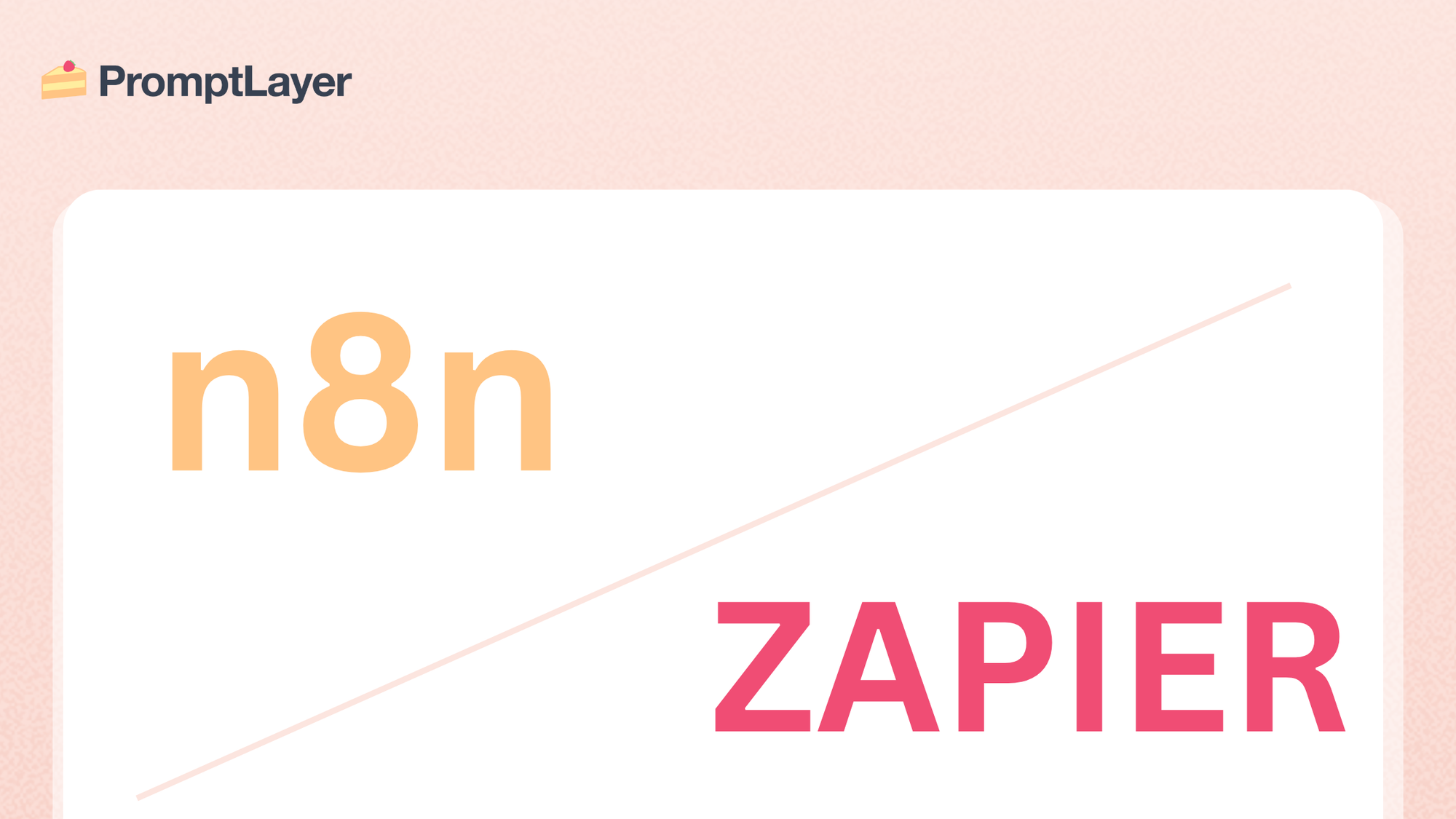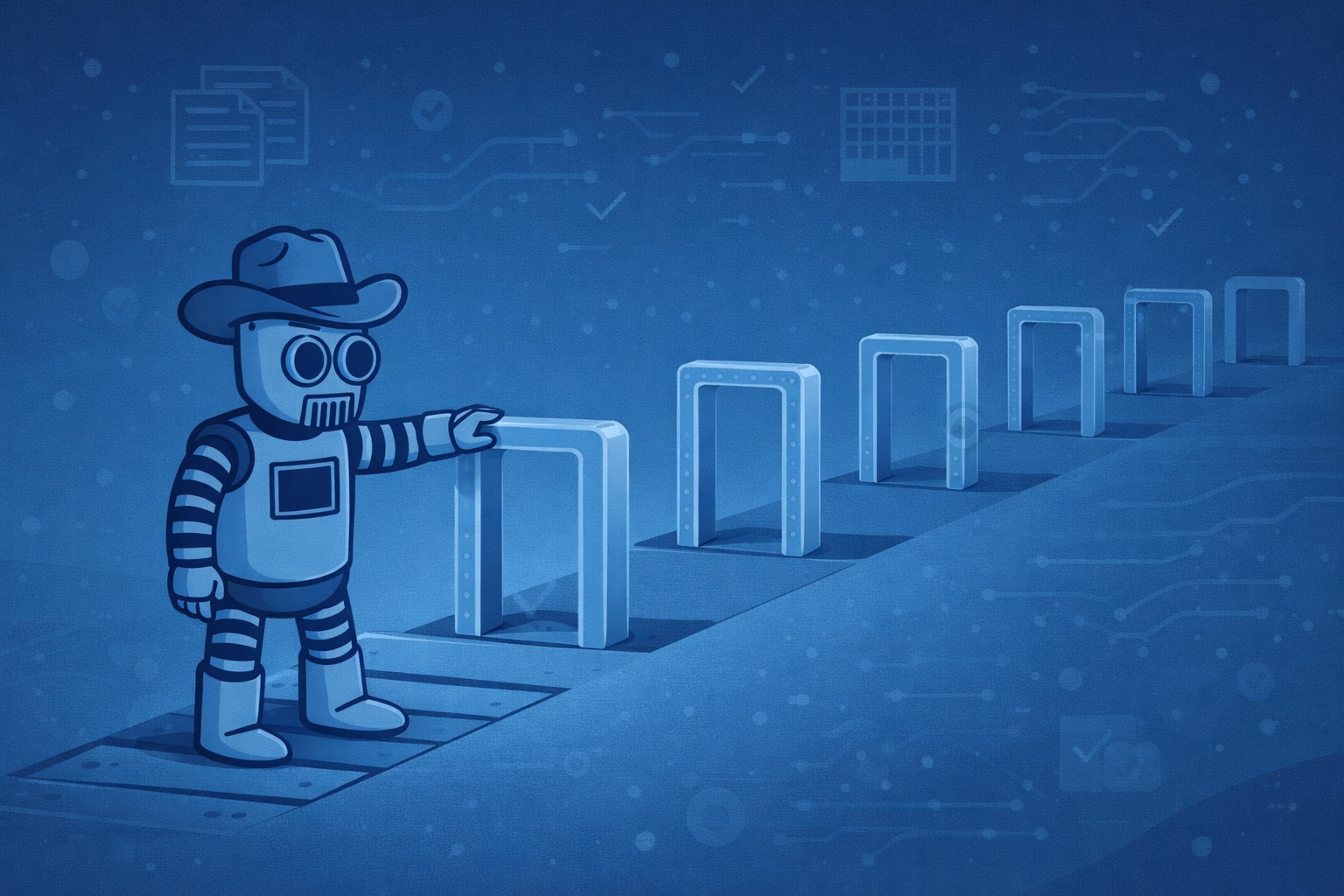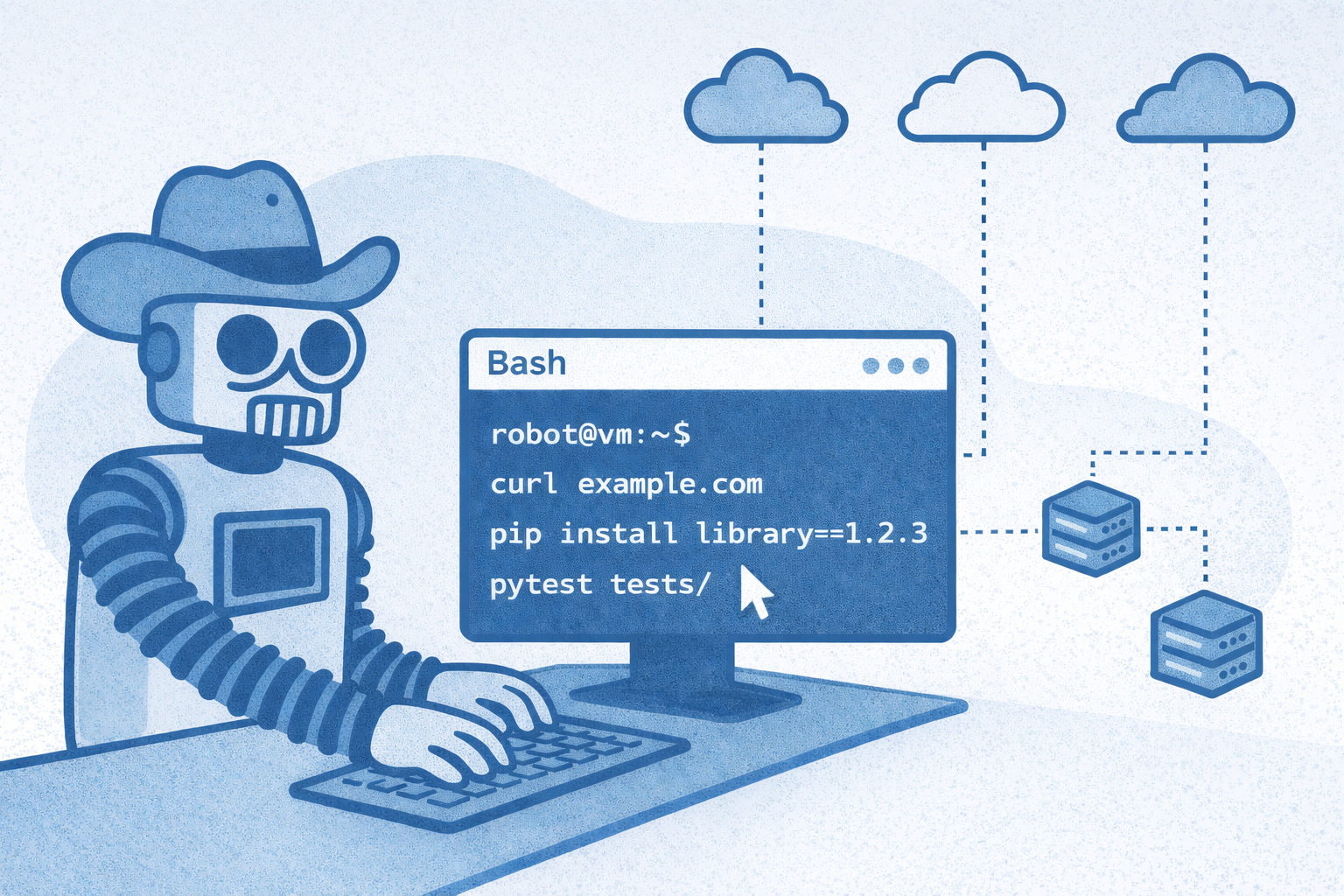n8n vs Zapier: A Comparative Analysis for AI-Powered Workflow Automation

I. Introduction: The Role of AI in Modern Automation
Workflow automation has grown beyond simple "if-this-then-that" rules and now shapes how businesses improve efficiency, scalability, and innovation. Today’s automation platforms connect a wide range of Software-as-a-Service (SaaS) apps, handle large data flows, and enable more complex logic. As technology and data volume increase, automation moves past basic task execution to become an essential tool for business process management.
This article directly compares n8n and Zapier, providing an in-depth look at "n8n vs Zapier" to help readers make an informed decision on which tool best fits their workflow automation needs.
The Rise of Large Language Models
Large Language Models (LLMs) are advanced AI systems trained on vast datasets. They excel at understanding and generating human language, answering questions, creating summaries, interpreting images, and more. Adding LLMs to workflow automation brings intelligence to processes that once required human input. This shift means automation can now handle ambiguous requests and generate original content, boosting both efficiency and possibilities.
Accelerate Your AI Automations with PromptLayer
PromptLayer is the ultimate prompt management system, purpose-built for teams and individuals who want to move fast and iterate with confidence.
With PromptLayer, you can organize, version, and update your prompts in a dedicated CMS, run instant batch evaluations, and deploy updates to production in minutes—not days.
PromptLayer gives you deep analytics, robust collaboration features, and seamless API access, so your prompts stay effective and production-ready. Unlock the full power of LLMs and bring true agility to your automation pipeline.
Try PromptLayer now and transform the way you build with AI!
Introducing n8n and Zapier
Two leading platforms in workflow automation are n8n and Zapier. Both serve different audiences and approaches.
- n8n (launched in 2019) is open-source, low-code, and event-driven. Users design automations by connecting "nodes" on a visual canvas, giving them significant control over logic and data.
- Zapier is a no-code, cloud-based tool designed for ease of use. It lets users link more than 7,000 apps and automate repetitive work with a step-by-step interface called Zaps.
Zapier’s user-friendly design appeals to non-technical users and small teams. n8n, on the other hand, offers developers deeper technical control, greater customization, and more ownership of their automation stack. As automation needs have grown—especially with the rise of AI and data privacy concerns—the demand for flexibility has increased.
Purpose and Scope
This analysis compares n8n and Zapier, highlighting their features, strengths, and weaknesses, with a special focus on workflows that include LLMs. The article aims to serve individuals and organizations evaluating these tools, especially in the context of integrating AI for workflow automation.
II. Platform Design and Philosophy
The structure and guiding principles of n8n and Zapier shape their capabilities and the types of users they best serve.
A. n8n: Flexible, Open-Source Automation
Architectural Overview
n8n uses a visual, node-based interface to let users build workflows. Each node is a step—such as receiving a webhook, scheduling an event, calling an API, or transforming data. Nodes are linked together to create clear, step-by-step logic.
n8n is open source and can be self-hosted, letting organizations control their own data and systems. It works on everything from virtual servers to on-premise hardware and Kubernetes clusters. There’s also a cloud-hosted version for those who want a managed solution. Workflows can be created, shared, versioned, and reused across environments, making collaboration easy.
Self-hosting is especially valuable for sensitive LLM workflows. Users can keep data private, customize the environment, and meet hardware requirements (like using GPUs for AI models). For LLM use, you can host models locally, manage security policies, and integrate with private databases—all without relying on a third-party cloud. Each node in n8n can be fine-tuned for detailed control at every stage.
Strengths and Target Users
n8n’s main strengths are flexibility, privacy through self-hosting, cost efficiency (especially for high-volume automation), advanced AI integration (e.g., with LangChain), and robust code execution (JavaScript and Python). These features make it popular with developers and technical teams who want full control and custom automation solutions. n8n also supports creating custom nodes and connecting to APIs not officially supported by the platform.
The platform’s architecture is ideal for rapid experimentation, especially with emerging AI technologies. Developers can easily test new models, refine prompts, and build complex workflows.
Pricing and Value
n8n’s pricing charges per workflow execution, not per step. The self-hosted version is free with unlimited use. The cloud version starts at about $20–$22/month for 2,500 executions. This model is especially cost-effective for complex, multi-step workflows common in LLM automation. Users can build advanced automations without worrying about every individual action increasing their bill.
B. Zapier: Broad, Accessible, Cloud-First Automation
Architectural Overview
Zapier is cloud-based and designed for non-technical users. Each automation, called a "Zap," starts with a trigger event and follows with a series of actions. Zapier supports over 7,000 apps through public APIs and offers a simple step-by-step editor. Newer features include Zapier Tables (for data storage) and Zapier Interfaces (for creating web forms and dashboards).
Being cloud-only, Zapier focuses on fast setup and integration breadth rather than deep customization. This makes it easy to connect popular apps but can be limiting for advanced use cases, such as those requiring full access to every AI model parameter.
Strengths and Target Users
Zapier’s intuitive interface and wide integration catalog attract small businesses, marketers, and professionals who need to automate processes without writing code. It offers quick setup, thorough documentation, and a large support community.
Zapier’s no-code approach lowers the barrier to automation, making AI and app integrations accessible for a wide range of users. As AI use grows, Zapier aims to let users add LLM features without learning technical details.
Pricing and Value
Zapier charges by the number of tasks (each action within a Zap). The free plan allows about 100 tasks per month, with paid plans starting around $20–$30/month for higher allowances. Costs can increase quickly for workflows with many steps or large data volumes. This model may discourage building advanced, multi-step automations, especially for workflows that process significant data or use LLMs repeatedly.
Core Platform Comparison Table
| Feature | n8n | Zapier |
|---|---|---|
| Architecture | Node-based, event-driven | Step-based, cloud-native |
| Hosting | Self-hosted, Cloud | Cloud-only |
| Open Source | Yes | No |
| Target Audience | Developers, technical teams | Non-technical users, SMBs, marketers |
| Workflow Builder | Visual nodes, full code support | Simple, step-by-step UI |
| Pricing | Per workflow execution | Per task |
| Native Integrations | 1,000+ (focus on depth, APIs) | 7,000+ (focus on breadth, simplicity) |
| Custom Code Support | Full JS/Python, custom libraries | JS/Python (output, time limits) |
III. Workflow Creation and Management
Both n8n and Zapier have distinct styles for building, customizing, and maintaining workflows.
A. Workflow Creation Interfaces
- n8n: Features a visual editor where users drag and drop nodes onto a canvas. Nodes represent actions and triggers, with flexible logic and code support (JavaScript/Python). While powerful, this approach can be complex for beginners but pays off for those needing advanced, customized automations.
- Zapier: Uses a straightforward, linear interface. Users select a trigger and add action steps, all in plain language. Recent updates like Zapier Canvas (visual planning) and Interfaces (custom forms/pages) add more options, but the overall process remains simple and accessible.
B. App Integrations
- n8n: Offers around 400–1,000 built-in integrations. Its HTTP Request node and code execution allow connection to nearly any service with an API, including internal or uncommon systems. Users can build and share custom nodes for even more flexibility.
- Zapier: Connects with over 7,000 apps, covering nearly every popular SaaS tool. Its app marketplace and large set of templates make setup fast, especially for common business apps.
C. Logic, Error Handling, and Data Transformation
- n8n: Supports complex logic with IF/Switch nodes, detailed error handling, and robust data manipulation through Set and Function/Code nodes. Developers can build workflows that handle real-world data inconsistencies and API issues.
- Zapier: Provides basic conditional logic with "Paths," simple error notifications, and built-in Formatter tools for common data changes. Code steps are available but limited by size and performance constraints.
D. Data Privacy, Security, and Hosting
- n8n: Self-hosting gives organizations full control over data and infrastructure, helping them meet regulations like GDPR or HIPAA. The cloud option is available for those who don’t want to manage servers.
- Zapier: Runs entirely in the cloud with industry-standard security, but all data is processed on Zapier’s servers (mostly AWS in the U.S.). No self-hosting is available, which may not suit organizations with strict data residency or privacy requirements.
IV. Large Language Model (LLM) Integration
Integrating LLMs into automation workflows is a major differentiator between n8n and Zapier. Below, "LLM" means any advanced AI language model, such as OpenAI’s GPT-4 or Anthropic’s Claude.
A. Connecting to LLMs
- n8n: Integrates deeply with LangChain (an open-source framework for building LLM apps), providing nearly 70 nodes for AI applications. There are dedicated nodes for OpenAI, Anthropic, Ollama, Azure, and Google Gemini. For unsupported services, the HTTP Request node allows custom API calls. Developers can also write custom LangChain logic using the LangChain Code node.
- Zapier: Offers "AI by Zapier," providing built-in AI actions using models like GPT-4o mini without extra API keys. There are also integrations for OpenAI and Anthropic. The Zapier MCP protocol lets external AI agents trigger actions across Zapier’s app library, making it easy for non-developers to use LLMs.
B. Prompt Engineering
- n8n: Gives users complete control over prompts. Prompts can be built programmatically using data, code, or templates. LangChain nodes offer tools for prompt templating and advanced techniques, such as conditional prompts based on workflow data. Developers can use complex strategies like few-shot or chain-of-thought prompting.
- Zapier: Keeps prompt creation simple, offering pre-built templates and tips for writing effective prompts. "AI by Zapier" can optimize prompts automatically for better results. Technical users can use code steps to generate or refine prompts, but customization options are generally more limited than n8n.
C. Handling LLM Outputs
- n8n: Can process complex, unstructured, or nested outputs using Set, Function, and LangChain Output Parser nodes. Developers can use code to validate and manipulate outputs as needed, ensuring data is usable for downstream steps.
- Zapier: Maps LLM output fields to later steps. Built-in tools handle basic parsing, but there are output size and complexity limits in code steps. For very large or complex outputs, users may need workarounds or to simplify the data.
D. Chaining LLM Tasks and Managing Context
- n8n: Supports chaining multiple LLM steps in a workflow. The LangChain integration includes "Memory" modules for managing context across steps (such as chat history or retrieved data). Developers can design advanced pipelines, like using an LLM to extract data, summarize it, and then send follow-up actions—all within one workflow.
- Zapier: Supports basic chaining by passing data between steps and actions. Zapier Agents and Tables help manage simple context or store data across runs. For complex, multi-step reasoning, the flexibility is more limited compared to n8n’s explicit memory modules.
E. Advanced Use Cases: Retrieval-Augmented Generation (RAG) and AI Agents
Definitions:
- Retrieval-Augmented Generation (RAG) refers to AI systems that pull relevant data from sources (like documents or databases) before generating an answer.
- Embedding models turn data (such as text) into mathematical vectors for efficient searching.
- n8n: LangChain nodes cover all parts of a RAG pipeline—document loaders, text splitters, embedding models, and vector databases. Developers can customize every step, experiment with new AI models, and optimize for their unique needs. n8n also enables building AI agents with reasoning and planning abilities, powered by code or node-based workflows.
- Zapier: Makes it easy to connect agents to various knowledge sources like Google Sheets or Notion. External services, such as Agent Cloud, can add more advanced RAG features. Zapier Agents are designed to be easy to set up and train. However, they do not provide the same level of detailed control over AI configuration as n8n.
LLM Integration Feature Table
| LLM Feature | n8n | Zapier |
|---|---|---|
| Core LLM Integration | LangChain nodes, HTTP/API, direct AI nodes | Built-in "AI by Zapier," App Integrations |
| Supported Models | OpenAI, Anthropic, Google, Ollama, more | OpenAI, Anthropic, GPT-4o mini |
| Prompt Control | Full code/templates, dynamic, advanced methods | Basic, templates, some optimization |
| Output Handling | Custom parsing/code, robust handling | Field mapping, limited code/output size |
| Workflow Chaining | Full support, context/memory modules | Basic chaining, some context tools |
| RAG/AI Agent Capability | Fully customizable, modular | Simplified, limited fine-tuning |
Conclusion
n8n and Zapier each offer distinct strengths for AI-powered workflow automation. n8n excels in flexibility, control, and customization—especially for developers building complex, AI-driven automations. Zapier stands out for its ease of use, integration breadth, and accessibility for non-technical users. Choosing between them depends on your technical needs, desired level of customization, and data privacy requirements. For those prioritizing depth and technical control, n8n is often the better fit; for simplicity and speed, Zapier is hard to beat.
About PromptLayer
PromptLayer is a prompt management system that helps you iterate on prompts faster — further speeding up the development cycle! Use their prompt CMS to update a prompt, run evaluations, and deploy it to production in minutes. Check them out here. 🍰



